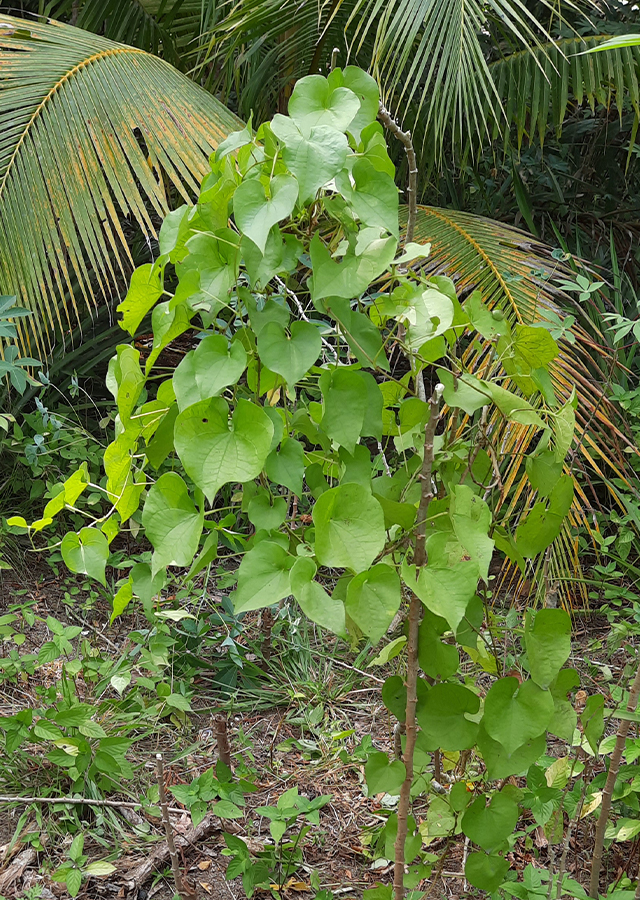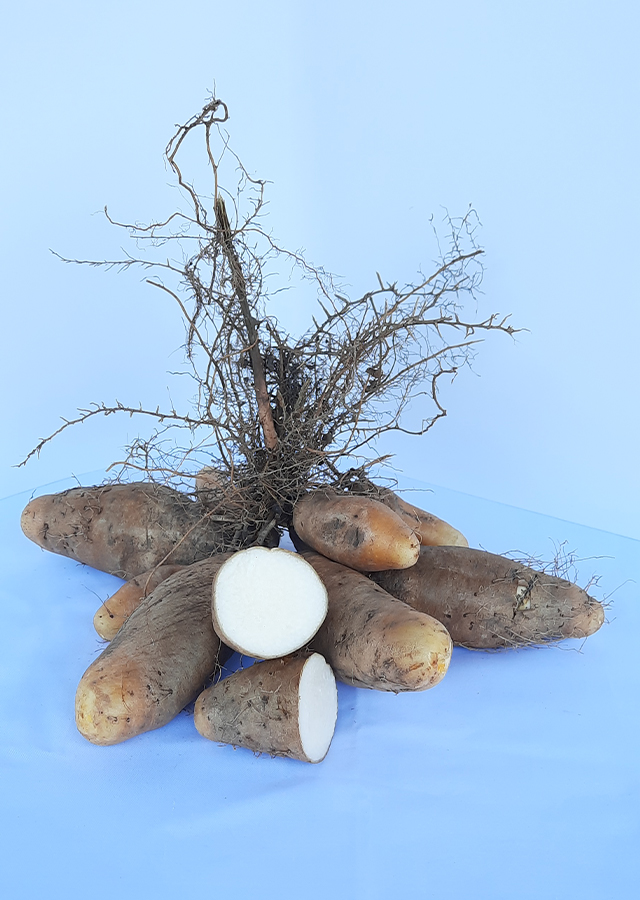Traditional Herbs from Dioscorea esculenta
boils_and_abscesses
- Prepare enough gembili tubers.
- Wash them until clean.
- Crush them until they become a paste
- Put them on the boils or abscesses.
rheumatic_and_uretic_medicines
- Take enough gembili tubers, wash them . until clean then peel the skin.
- Boil the tubers in enough water.
- Drink the boiled water while it's warm.
What is Dioscorea esculenta Looks like??



Parts of Dioscorea esculenta that could be used
- Seeds
- Tubers
Dioscorea esculenta Distribution
Gembili originates from Thailand and Indo-China (Vietnam), which spread throughout the tropics after 1500 AD. Currently, the cultivation of gembili plants is concentrated in Southeast Asia (especially Papua New Guinea), Oceania, Madagascar, the Caribbean Islands and China. Gembili has potential as a staple food and is currently made into flour which can be processed into various types of food. Apart from that, gembili can be used in traditional medicine.Agroecology of Dioscorea esculenta
This plant grows in tropical lowlands up to an altitude of 900 m above sea level. Grows well at daytime temperatures of 28-32 °C, average annual rainfall of 800-2,000 mm/yr, in full sun or shade, sandy loam soil with deep solum, well-drained, pH in the range of 5.5 -6.5.
Morphology of Dioscorea esculenta
- Fibrous roots, have thorny roots in wild plants.
- Tubers are round to oval, smooth surface, tuber flesh is pure white to cloudy white. Skin is cream to light brown. Tuber length is 15 to 20 cm.
- Stem round, slender, slightly hairy, spiny, twisted to the right.
- Leaves single, alternate, heart-shaped, length 8\u201315 cm, width 7\u201315.5 cm. Color\u00a0light green to dark green with light to dense leaf density. Stem color is green, tipped with purple, or green with purple edges, leaf stalk length 2\u201315.5 cm.
Cultivation of Dioscorea esculenta
Propagation by tuber cuttings. Tuber cuttings, weighing about 50-80 g with dormant buds, are planted in a place 4-8 cm deep with the stem pointing downwards.
Dioscorea esculenta, more details :
Chemical Content of Dioscorea esculentaSaponins, diosgenin, ß-sitosterol, stigmasterol,� cardiac glycosides, catechins, epicatechins,� chlorogenic acids, leucoanthocyanidins, anthocyanins, flavonoids, alkaloids.
Benefits of Dioscorea esculenta
Treating swelling, rheumatism, boils, abscesses, beriberi, menopausal symptoms and other genital disorders, diuretic.
Simplisia of Dioscorea esculenta
- Wash the tubers from soil and other dirt.
- Carry out the blanching process by soaking them in hot water at a temperature of 80\u00b0C for 1 minute until the entire tuber is submerged in water.
- Peel the skin of the gembili tubers with a knife.
- Slice with a slicer with a thickness of 1-2 mm then soak the tubers in a solution of 5% salt and 0.3% sodium metabisulfite for 2 hours.
- Wash with running water and dry in a cabinet dryer at temperature 60 \u00b0C for 6-8 hours. Then blend the dry tubers and sift through 80 mesh.
- Pack the simplicia in a clean, airtight container.
Another Facts for Dioscorea esculenta :
Synonym of Dioscorea esculentaDioscorea aculeata Roxb., Dioscorea fasciculata Roxb., Dioscorea papillaris Blanco
Habitus of Dioscorea esculenta
Creepers. Annual vines, up to 3 m high
Habitat of Dioscorea esculenta
- Rocky Area", "Bush Area", "Grassland
No comments:
Post a Comment